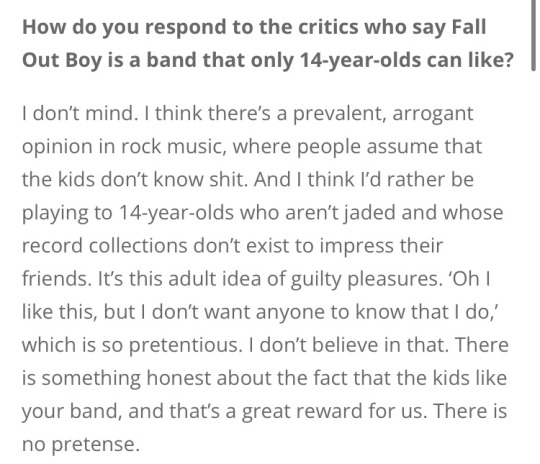#type: article
Explore tagged Tumblr posts
Text

'We Can Bury Anyone': Inside a Hollywood Smear Machine (Megan Twohey and Mike McIntire and Julie Tate, The New York Times, Dec 21 2024)
"Last summer, as the release of “It Ends With Us” approached, Justin Baldoni, the director and a star of the film, and Jamey Heath, the lead producer, hired a crisis public relations expert.
During shooting, Blake Lively, the co-star, had complained that the men had repeatedly violated physical boundaries and made sexual and other inappropriate comments to her.
Their studio, Wayfarer, agreed to provide a full-time intimacy coordinator, bring in an outside producer and put other safeguards on set.
In a side letter to Ms. Lively’s contract, signed by Mr. Heath, the studio also agreed not to retaliate against the actress.
But by August, the two men, who had positioned themselves as feminist allies in the #MeToo era, expressed fears that her allegations would become public and taint them, according to a legal complaint that she filed Friday.
It claims that their P.R. effort had an explicit goal: to harm Ms. Lively’s reputation instead.
Her filing includes excerpts from thousands of pages of text messages and emails that she obtained through a subpoena.
These and other documents were reviewed by The New York Times. (…)
Mr. Baldoni was best known for the CW satirical romantic dramedy “Jane the Virgin.”
Wayfarer provided the resources for bigger ambitions. It was bankrolled by the billionaire Steve Sarowitz, who is co-chair of the studio with Mr. Baldoni.
They and Mr. Heath, the chief executive, are all deeply involved with the Baha’i religious organization, which promotes unity, peace and gender equality.
Mr. Baldoni has presented himself as an ally to women, writing books, co-hosting a podcast with Mr. Heath and giving talks on toxic masculinity. (…)
She claimed Mr. Baldoni had improvised unwanted kissing and discussed his sex life, including encounters in which he said he may not have received consent.
Mr. Heath had shown her a video of his wife naked, she said, and he had watched Ms. Lively in her trailer when she was topless and having body makeup removed, despite her asking him to look away.
She said that both men repeatedly entered her makeup trailer uninvited while she was undressed, including when she was breastfeeding. (…)
As the film release neared, Ms. Lively and other cast members informed Sony and Wayfarer that they would not do any appearances alongside Mr. Baldoni.
So did Ms. Hoover, the author, who had her own dissatisfactions with him and had become more upset after he told her about Ms. Lively’s allegations, according to text messages from Mr. Baldoni and Mr. Heath.
By the first week of August, Wayfarer and Mr. Baldoni had retained Ms. Nathan, who had worked with high-profile clients including Mr. Depp, whose ex-wife, Amber Heard, accused him of physical abuse. (…)
Three days later, Mr. Baldoni texted Ms. Abel, flagging a social media thread that accused another celebrity of bullying behavior and had generated 19 million views. “This is what we would need,” he wrote.
Ms. Nathan soon floated proposals to hire contractors to dominate social media through “full social account take downs,” by starting “threads of theories” and generally working to “change narrative.”
“All of this will be most importantly untraceable,” she wrote. (…)
When Ms. Abel wrote to her Aug. 4 that “I’m having reckless thoughts of wanting to plant pieces this week of how horrible Blake is to work with. Just to get ahead of it,” Ms. Nathan replied that she had spoken off the record to an editor at The Daily Mail.
“She’s ready when we are,” Ms. Nathan wrote.
A flurry of articles followed the Hollywood Reporter piece. Many made it seem as if the only rift was over creative control.
Some journalists had gotten wind of complaints about Mr. Baldoni’s behavior, but none of the most serious ones were published.
“He doesn’t realise how lucky he is right now,” Ms. Nathan texted Ms. Abel. (…)
It is unclear exactly how Mr. Wallace operated.
There are references in emails to “social manipulation” and “proactive fan posting,” and text messages cite efforts to “boost” and “amplify” online content that was favorable to Mr. Baldoni or critical of Ms. Lively.
“We are crushing it on Reddit,” Mr. Wallace told Ms. Nathan, according to a text she sent Ms. Abel on Aug. 9.
The next day, one of Ms. Nathan’s employees texted, “We’ve started to see shift on social, due largely to Jed and his team’s efforts to shift the narrative.”
Ms. Nathan wrote to Ms. Abel: “And socials are really really ramping up. In his favour, she must be furious. It’s actually sad because it just shows you have people really want to hate on women.” (…)
On Aug. 16, Ms. Nathan shared the Daily Mail article headlined “Is Blake Lively set to be CANCELLED?” with references to ‘hard to watch’ videos and a ‘tone deaf’ promotional Q. and A.
“Wow. You really outdid yourself with this piece,” Ms. Abel responded.
“That’s why you hired me right?” Ms. Nathan replied. “I’m the best.”"
2K notes
·
View notes
Note
'tis me!
did I ever share this old article with you? lots of awesome quotes in it. anyway I miss Azzi playing basketball sighhhh fingers crossed for this weekend
https://sports.yahoo.com/a-steph-curry-for-girls-how-azzi-fudd-could-end-up-inspiring-others-in-womens-hoops-145034727.html
hello you ❤️
I don't remember reading this article and almost took a screenshot of the whole thing because it's so good 😅. With her jumping around trying to get blocks, her knee looks ready to go.

Also, I love this pic of Steph and Azzi (the master and his student).

82 notes
·
View notes
Text




link to the article
siraj's tumblr blog
siraj's gofundme
#og#palestine#siraj#palestine resources#gaza#free palestine#free gaza#gaza strip#save palestine#i stand with palestine#all eyes on palestine#palestine genocide#gaza genocide#substack#interview#article#journalism#politics
14K notes
·
View notes
Text
Opinion Here’s how to get free Paxlovid as many times as you need it
When the public health emergency around covid-19 ended, vaccines and treatments became commercial products, meaning companies could charge for them as they do other pharmaceuticals. Paxlovid, the highly effective antiviral pill that can prevent covid from becoming severe, now has a list price of nearly $1,400 for a five-day treatment course.
Thanks to an innovative agreement between the Biden administration and the drug’s manufacturer, Pfizer, Americans can still access the medication free or at very low cost through a program called Paxcess. The problem is that too few people — including pharmacists — are aware of it.
I learned of Paxcess only after readers wrote that pharmacies were charging them hundreds of dollars — or even the full list price — to fill their Paxlovid prescription. This shouldn’t be happening. A representative from Pfizer, which runs the program, explained to me that patients on Medicare and Medicaid or who are uninsured should get free Paxlovid. They need to sign up by going to paxlovid.iassist.com or by calling 877-219-7225. “We wanted to make enrollment as easy and as quick as possible,” the representative said.
Indeed, the process is straightforward. I clicked through the web form myself, and there are only three sets of information required. Patients first enter their name, date of birth and address. They then input their prescriber’s name and address and select their insurance type.
All this should take less than five minutes and can be done at home or at the pharmacy. A physician or pharmacist can fill it out on behalf of the patient, too. Importantly, this form does not ask for medical history, proof of a positive coronavirus test, income verification, citizenship status or other potentially sensitive and time-consuming information.
But there is one key requirement people need to be aware of: Patients must have a prescription for Paxlovid to start the enrollment process. It is not possible to pre-enroll. (Though, in a sense, people on Medicare or Medicaid are already pre-enrolled.)
Once the questionnaire is complete, the website generates a voucher within seconds. People can print it or email it themselves, and then they can exchange it for a free course of Paxlovid at most pharmacies.
Pfizer’s representative tells me that more than 57,000 pharmacies are contracted to participate in this program, including major chain drugstores such as CVS and Walgreens and large retail chains such as Walmart, Kroger and Costco. For those unable to go in person, a mail-order option is available, too.
The program works a little differently for patients with commercial insurance. Some insurance plans already cover Paxlovid without a co-pay. Anyone who is told there will be a charge should sign up for Paxcess, which would further bring down their co-pay and might even cover the entire cost.
Several readers have attested that Paxcess’s process was fast and seamless. I was also glad to learn that there is basically no limit to the number of times someone could use it. A person who contracts the coronavirus three times in a year could access Paxlovid free or at low cost each time.
Unfortunately, readers informed me of one major glitch: Though the Paxcess voucher is honored when presented, some pharmacies are not offering the program proactively. As a result, many patients are still being charged high co-pays even if they could have gotten the medication at no cost.
This is incredibly frustrating. However, after interviewing multiple people involved in the process, including representatives of major pharmacy chains and Biden administration officials, I believe everyone is sincere in trying to make things right. As we saw in the early days of the coronavirus vaccine rollout, it’s hard to get a new program off the ground. Policies that look good on paper run into multiple barriers during implementation.
Those involved are actively identifying and addressing these problems. For instance, a Walgreens representative explained to me that in addition to educating pharmacists and pharmacy techs about the program, the company learned it also had to make system changes to account for a different workflow. Normally, when pharmacists process a prescription, they inform patients of the co-pay and dispense the medication. But with Paxlovid, the system needs to stop them if there is a co-pay, so they can prompt patients to sign up for Paxcess.
Here is where patients and consumers must take a proactive role. That might not feel fair; after all, if someone is ill, people expect that the system will work to help them. But that’s not our reality. While pharmacies work to fix their system glitches, patients need to be their own best advocates. That means signing up for Paxcess as soon as they receive a Paxlovid prescription and helping spread the word so that others can get the antiviral at little or no cost, too.
{source}
27K notes
·
View notes
Text
HETEROSEXUAL CIS-PEOPLE LOOK HERE

Snaps my fingers at you as you scroll past this post
Look at me. Listen.
I'm not the best at serious posts, but that article up there reminded me of how important it is that people like you stand up for us. So hold on while I try to get this out of my mushy end-of-work-day brain.
We could fight this fight ourselves for decades trying to reach the equal laws, gender affirming trans healthcare that doesn't have a 2-5+ soul-eating years of waiting time, medical care with equal knowledge of lgbtqia+ bodies, and, what is often forgotten, inclusion in the little everyday areas of life like our way of speaking or things being set up or designed with the existence of queer people in mind.
But you joining in could get us there so much faster.
The power you have as a hetero cis person is that you set the standard for what is seen as the average way of treating us among other hetero cis people. You have been given the power of deciding what's "normal" and I'm begging you to use it.
Richard Green is a great example of to what extent your actions can help our situation, and smaller ways of support still add up to a great impact on society, and could make the days of the queer people you interact with.
Educate yourself before you speak up, but don't be silent.
#lgbtqia+#lgbtq#lgbtqia#lgbtq+#lgbtqia+ rights#lgbtq+ rights#lgbtq rights#interesting#article#psychology#mental health#psychologist#reading#culture#cooking#drawing#music#nature#science#baking#pets#inspirational#gaming#photography#fashion#writing
14K notes
·
View notes
Text
Yuzu Pays $2.4 Million to End Nintendo Lawsuit
8K notes
·
View notes
Text
https://www.blutonews.org/article/15
Bluto Made his teeth thin for no reason


bluto was wearing his favorite yellow hat when he saw nothing and there wasnt anything, but he still made his teeth thin for now reason, and his eyebrows got so close it looked like one eyebrow
2K notes
·
View notes
Text


patrick stump, 2006 / 2023
37K notes
·
View notes
Text

Eddie’s Season 8 mustache, which showrunner Tim Minear confirms to TVLine is a “manifestation of something that’s going on within him,” has taken social media by storm — but we’re sad to report that, like all good things, it won’t last forever. Minear says the emotional reason behind the ‘stache will be explored “in an episode where he shaves it off.” Speaking of mustaches, Buck has an especially difficult time bowing to Gerrard as the 118’s new captain. (“He’s awful, and he’s an awfully fun character to have in the mix.”) On the bright side, Buck’s relationship with Tommy is going strong (“They’re still getting to know each other a little better”), so at least he’ll have someone to complain to after a long day of putting up with his racist, sexist, homophobic boss. Meanwhile, Bobby becomes a technical advisor on a “ridiculous firefighter show that’s nothing like reality”; Councilwoman Ortiz will remain a thorn in Hen and Karen’s sides as they fight to get their foster care license reinstated; newlyweds Maddie and Chimney weigh the pros and cons of growing their own family; and the return of a familiar face from Athena’s past will force her to “deal with a seminal event in her canonical life.”
BONUS SPOILER!: The two recurring villains of Season 8, Captain Gerrard and Councilwoman Ortiz, are “connected in many ways,” Minear hints.
1K notes
·
View notes
Text

Why are British teenage girls so unhappy? Here’s the answer (Caitlin Moran, The Times, Sep 13 2024)
"The report, by the Children’s Society, found that British 15-year-old girls are the most unhappy in Europe.
British girls aged 10-15 are “significantly less happy” with their life, appearance, family and school than the average boy — and their happiness is still declining.
Boys’ life satisfaction, meanwhile, remains broadly stable. (…)
But I still didn’t have an “aha!” moment about why this so disproportionately affects girls until… I talked to some teenage girls.
It was at a party, and I went to vape with them on the patio. Because I take my nicotine like children do.
“Duh — it’s the boys,” one said when I brought it up, as all the others agreed.
“The boys?” I asked.
My last book, What About Men?, had been all about how much boys struggle these days: their loneliness; their suicide rates. I’d spent the past year feeling very sympathetic towards boys.
“Yeah, well, who do you think they’re taking out their unhappiness on? It’s us,” another girl said.
“One boy at school used to draw a picture every day of how ugly I was,” a third girl said. “Every day for two years.”
“They’ve all got ‘Rate The Girls’ polls on their WhatsApps,” the first said. “They mark you down for weight gain, haircuts, what you say.”
“But then, if you’re hot, it’s just as bad, in a different way, because they’ll be talking about how they want to f*** you.”
The girls discussed coping techniques. Bad news: none of them worked.
“The only way you can stop them is if you become ‘one of the boys’ and hang out with them. But then,” the second girl said with a sigh, “all the other girls call you a slut. Because you’ve gone over to the boys’ side.”
“Surely it’s not all the boys?” I said. “There must be some nice boys?”
“Oh, yeah,” one girl said. “But they keep their heads down. Because… well, look.”
She showed me the Instagram account of her friend. Under every picture she posted of herself — smiling in a new dress; with her dog — dozens of anonymous accounts had replied with the most rank abuse.
“Fat.” “Slut.” “You gonna try and kill yourself again, for attention?”
“They’re all boys from her school,” she said. “And look, this one boy tried to defend her.”
I saw a series of messages from a brave teenage boy, posting things like, “You’re all big men, leaving these replies under anonymous accounts.”
As I could see, this boy immediately became a target too. Mainly accusations that he was “white knighting” this girl: “You wanna f*** her, bro?”
“So,” I asked, “you don’t think it’s social media pressure to be beautiful, or the economy, that’s making girls so sad?”
“Well, yeah, them too,” the first girl said. “But, Monday-Friday, 9-3, I’m not on social media. I’m not… in the economy. I’m just with these boys. And no one talks about how horrible they are.”
I thought about another recent report, showing a 30 per cent ideological gap between Gen Z men, who are increasingly conservative, and Gen Z women, who are increasingly progressive.
I thought about Andrew Tate, who has nine million mostly young male followers — and faces human trafficking charges, which he denies.
And I thought: maybe these girls are on to something. Maybe more people need to vape with teenage girls and ask them for the school gossip."
20K notes
·
View notes
Text

READ HERE
#may contain spoilers idk i haven’t read it#will come back and tag this later#article#i’m at work lmao#dan and phil#phan
712 notes
·
View notes
Text


Nowthisissound.com, 08/12/2010
657 notes
·
View notes
Text
#FuckStalkerware pt. 5 - déjà vu? OwnSpy pwned again
reporting on stalkerware feels like being trapped in a timeloop
new article by me, edited by @rhinozzryan, cover art by @mukky-world
#fuckstalkerware#maia arson crimew#stalkerware#mukky's world#cybersecurity#security#infosec#article#blog#journalism
2K notes
·
View notes
Text
There are two configurations available: one with 6GB of RAM and 128GB of storage for $599 and another with 8GB of RAM and 256GB of storage for $679. The storage of both models can be expanded via microSD, and the phone features a modular design that can be easily disassembled using a standard Phillips #00 screwdriver to replace broken components. It also has an IP54 rating, meaning the device is protected against dust and water sprays.
The Murena Fairphone 4 will ship to US customers with 5G and dual SIM support, a removable 3905mAh battery, a 48-megapixel main camera, a 48-megapixel ultrawide, and a 25-megapixel selfie camera. The phones will be available to order exclusively from Murena’s webstore starting today.
25K notes
·
View notes
Text

February 15, 2024
2K notes
·
View notes